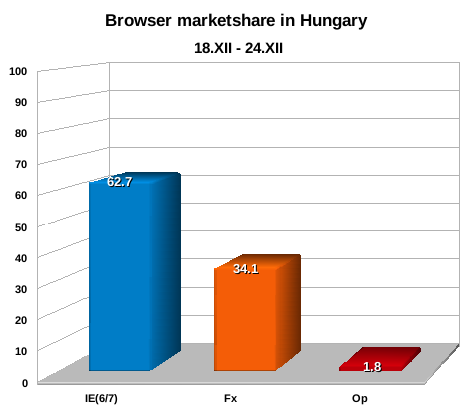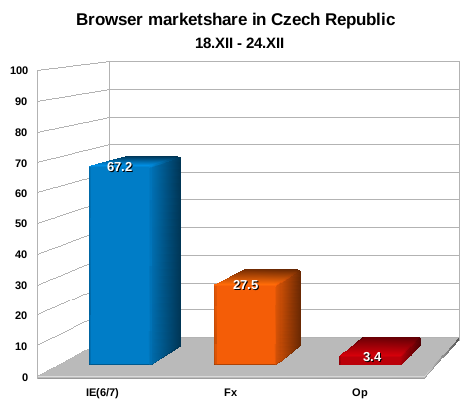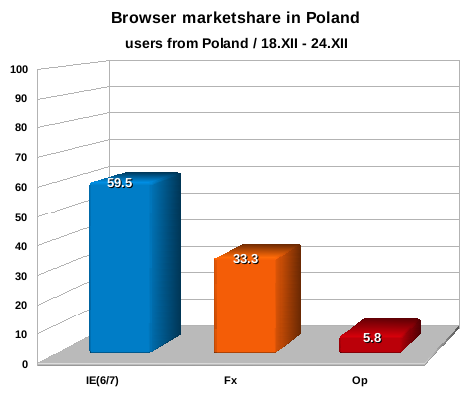Heh, you know when you can say that the time is historical? When a lot things happens fast. (A. Sapkowski – Narrenturm)
So it is a historical time for me. I’ll let you know more very soon, but for now, I just want to catch up with my backlog of Interesting Things:
- HTML5 draft is out! (Ptak translated it for Polish readers.) – it’s a very important moment. We can see that the web is progressing. And the direction is to meet the needs of the people, not the parsers (vide XHTML 2.0)
- Mozilla turns 10! If for any reason you spent last years hidden under a rock, let me tell you that the web during last 4 years is regaining it’s speed after a long stagnation period provided to us all by a big M company from Redmond. And yes. It’s absolutely related to the things Mozilla did. You can send love-you postcards to Mountain View.
- Microsoft still does not get what the web is about.The majority of negative feedback is related to this pure fact that the solution MS decided to go is simply wrong. It’s not malicious, it’s not horrible. It’s simply wrong. A company that spend so much time doing wrong things for the web should not repeat the same once more. The majority of positive feedback is related to the fact that MS is finally at least trying to fix something.(*) I’m really happy to see Microsoft using HTML markup to solve the problem (instead of ifie7 hacks), I really miss Microsoft discussing the ideas with others before choosing their approach.
- I’m really happy to see that HTML5 will be supported by MSIE!I hope they’ll abandon the idea of META tag, and together with other vendors push HTML5 once it’s ready (and XHTML 1.0) leaving old web behind. It would really be a great achievement and a cooperative one 🙂
- I spent lat two days in Paris, with Jane Finette, Anne-Julie Ligneau, Tristan Nitot, John Lilly, Paul Kim, Pascal Chevrel and Peter Van der Beken in the Mozilla Europe HQ 🙂 (photos) It was a very important meeting for us all, and I believe we all perceive it as a huge success. 2008 will be the the most exciting year since 2004 (Fx 1.0 release), I think 🙂
That’s all for now. I’ll try to write more about the last meeting during the weekend.
*) There are factors in sociology/psychology that represents this. People either judge the results or the motives of other people deeds. Usually people with individualistic type of personality judge the results, while collectivists the motives. In western culture the individualistic type is promoted and because is often assumed correlation with strong personality, assertiveness, (Jung’s) extraversion and internal locus of control (which often may not be truth). The problem with such case (and it may refer to people as well as to companies), is that individualists tend to look at the results, so when an individual who behaved badly in the past tries to change and fix things but fails to (on the first try) people who look at the results may tend to PUNISH the try preventing an individual from next tries. In this case I can imagine that such storm of negative feedback may result in Chris Willson and MSIE team getting used to it and building a habit of not trying to get feedback, because it gathers too much blaming. What’s even worse is that they may internally build an assumption that they are “different” than other browser vendors, their “needs” are different, nobody understands them and they need to focus on themselves because there’s no room for cooperation. If a person who’s approaching this direction is “weaker” than the rest, he’ll build a ghetto. If he’s stronger, he’ll build despotizm and ignorance toward other market players. Guess where Microsoft is…








